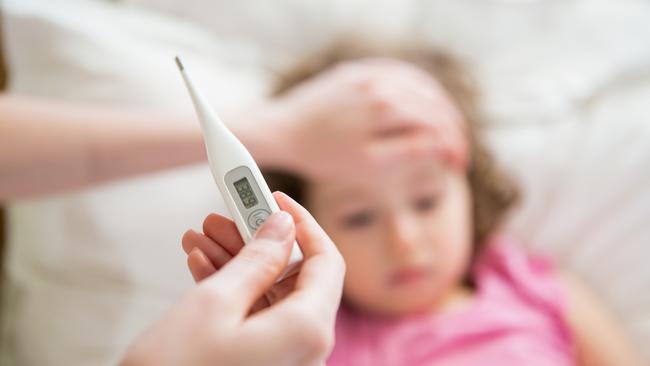Workers face burnout as childcare industry buckles under pressure of ongoing virus outbreaks
As Queensland parents grapple between taking time off work or sending sick children to daycare, childcare workers are facing burnout amid ongoing virus outbreaks.
QLD News
Don't miss out on the headlines from QLD News. Followed categories will be added to My News.
Understaffed, burnt-out childcare workers are feeling obligated to come back to work despite still being sick amid ongoing virus outbreaks, according to the industry body.
As parents grapple between taking time off work or sending their sick children to childcare, workers have upped hygiene measures to avoid catching illnesses off children who, at times, can act as virus superspreaders.
Queensland president of the Australian Childcare Alliance, Majella Fitzsimmons, said the current situation is “soul crushing” for both workers and parents.
“It’s really soul crushing at the moment …. There’s a huge workforce shortage of early childhood educators at the moment.
“We’ve also got families saying that they’re going to lose their jobs if they don’t go to work again to take care of their sick child. Or they’ve got no sick leave left and can’t afford to take time off work, so it’s a real struggle.”
In her own services, Ms Fitzsimmons said she’s seen a quarter to two thirds of staff off sick at one time, and just two weeks ago she had seven staff off sick at once.
“Some of my staff were doing four to five hours of overtime a couple of weeks ago, when we were in the thick of it. But it just creates more burnout and it’s not sustainable,” she said.

Ms Fitzsimmons said workers feel “obligated” to come back to work before they’ve recovered, both for the sake of the families and because most will run out of sick leave and can’t afford to take more time off work.
“It’s a catch-22 situation, we don’t want them to come to work sick but we also never, ever want to have to tell a family that they have to keep their kids at home because there’s not enough staff to meet the ratio,” she said.
For parents, the current advice is to keep sick kids at home where possible if they’re displaying symptoms of a fever, cough, runny nose or sore throat, according to the Royal Australian College of General Practitioners vice president Dr Bruce Willett.
“Parents should be aware that influenza is a serious risk to children under five, and we have seen significant hospitalisations and ICU admissions with children around the country,” he said.
“This is due to the fact that babies and toddlers born during the pandemic have never been in contact with the influenza virus and have no immunity.”
Dr Willett said knowing if your child is sick enough for a doctor depends on a range of symptoms including having a fever for babies under three months old and immunocompromised children.
For all other children, a fever is worth a trip to the doctor if they’re also presenting any of these symptoms: a stiff neck, light hurting their eyes, vomiting, refusing to drink much, rash, sleepiness, problems with breathing, pain that doesn’t get better with pain relief, fever for longer than two days with no obvious cause, worsening symptoms or a febrile seizure.


